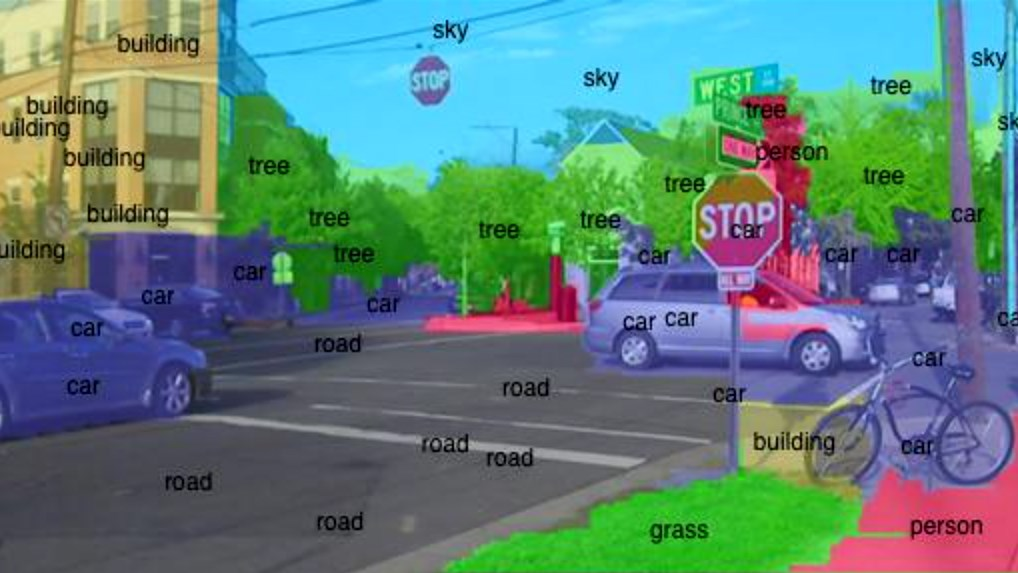Top 17 Computer Vision Machine Learning Interview Questions (Updated for 2025)
Overview
Interviews for computer vision engineer and CV researcher roles are similar in many ways to ML engineer interviews. You’ll face lots of ML system design and Python programming questions.
However, the biggest difference is that all the questions will relate to computer vision, and during the technical screens and the on-site, you’ll be facing questions and sessions that are focused on CV techniques.
The most common concepts to come up in computer vision interviews include:
- Computer vision algorithms and ML - designed to assess your knowledge of computer vision algorithms, like convolutional neural networks and CV-related machine learning concepts.
- Programming - Expect a technical screen covering Python, as well as on-site sessions focused on Python CV techniques
- Computer vision basics - defines particular techniques, CV libraries, and more.
In this article, we break down the key computer vision interview questions you can expect and the essential machine learning concepts that often come up.
Computer Vision Basics

Be prepared for basic computer vision interview questions early on in the process. These questions are designed to quickly assess your expertise and working knowledge of common CV tools.
One tip: Always check out the computer vision projects a company is working on before starting. You can find CV blogs for most large tech companies—here are the blogs from Meta, Amazon, and Google.
1. What is a computer vision library? What are the most common CV libraries?
Interviewers ask questions like this to understand your expertise and working knowledge of CV tools quickly. A computer vision library stores equations and functions that can then be used to create neural networks for image identification and processing. Popular CV libraries include:
- TensorFlow
- OpenCV
- MATLAB
- Keras
- PCL
- DeepFace
2. What technique(s) would you use to evaluate an object detection model?
As you prepare, practice defining use cases that align with specific CV techniques and potential benefits. For this question, you might discuss Intersection over Union (IoU). IoU is a metric used to evaluate the model’s accuracy and measure the overlap between the predicted and ground truth bounding box.
3. What is OpenCV? What algorithms are available in OpenCV?
OpenCV is a computer vision library that offers a variety of computer vision programming functions. It’s mostly written in C++, but there is also a JavaScript version. Some of the most common algorithms that can be deployed in OpenCV are random forest, artificial neural networks, support vector machines, and convolution neural networks.
4. Explain the “mach band effect.”
This refers to the optical illusion created when images have edges with similar shades of grey. The eye naturally adjusts by interpreting higher contrast between the two. In computer vision, the Mach band causes inaccurate results. One way to reduce the Mach band effect is to adjust the smoothness to reduce the banding effect.
Additional CV Basics Questions
5. Explain why the inputs in computer vision programs can get so large. What are some methods for overcoming this?
6. Why would you greyscale images in computer vision? Explain what a digital image is?
7. How does convolution work? How does it change if the inputs are greyscale vs. RGB?
Computer Vision Algorithm Questions

Machine learning algorithm questions in computer vision interviews assess your understanding of CV algorithms, e.g., how they work, use cases, and how you might implement a new model. You should have a strong grasp of SIFT, Global Block Matching, convolutional neural networks, and traditional machine learning algorithms.
8. What does it mean to use “inception architecture” for a CNN? What does it solve?
An inception network is a deep neural network with an architecture that consists of inception modules, which are repeating components. Using inception architecture introduces blocks containing multiple convolutional and pooling layers stacked together. This gives more accurate results and can help to reduce computation costs.
9. How would you encode a categorical variable with thousands of distinct values?
The approach to this encoding categorical features question depends on whether the problem is a regression or a classification model. If it’s a regression model, one possible solution would be to cluster the categorical variables based on the response by working backwards. You could sort them by the response variable and then split the categorical variables into buckets based on the grouping of the response variable.
10. How would you explain the bias-variance tradeoff in machine learning to a high school student?
The bias-variance tradeoff is the tradeoff between predictive accuracy and the generalization of patterns outside training data. Increasing the model’s accuracy will lead to less generalization, while increasing the bias will decrease the variance.
11. How would you design the inputs and outputs for a model to detect bombs at a border crossing? Measure accuracy? Test your model.
Remember the equation for precision:

Because we can’t have high TrueNegatives, recall should be high when assessing the model.
Additional Computer Vision Algorithm Questions
12. How would you modify a neural network to account for mislabeled training data?
13. How would you explain the predictions of a neural network to non-technical stakeholders?
Computer Vision Python Questions

Python machine learning questions test your ability to write code used in computer vision. This would include writing functions for image rotation, image processing, detection, and visualization.
14. Given an array filled with random values, write a function rotate_matrix to rotate the array by 90 degrees in the clockwise direction.
Can a simpler matrix transformation be performed on the example matrix array with the same output as a 90-degree clockwise rotation? What is special about the example matrix that makes this possible?
15. Given a JSON object with nested objects, write a function flatten_json that flattens all the objects to a single key-value dictionary.
You’ll likely be asked to perform the task without using a library.
16. Build a KNN classification model from scratch.
Writing algorithms from scratch are increasingly common in coding interviews. With a KNN algorithm question like this, you’ll be given conditions and then will be instructed to write the code from the ground up.
17. How would you create a system to automatically detect if a listing on the marketplace is selling a gun?
To create an effective system detecting firearm listings, we need more information. Make assumptions about how the system currently works (in a real interview, you would ask the interviewer clarifying questions where they would tell you how the system works).
For example, how is the current flagging system working in production?
More Computer Vision Interview Resources
Prepare for your computer vision and machine learning interviews with these resources from Interview Query:
- Machine Learning Interview Questions
- Machine Learning Algorithm Questions
- Interview Query’s Machine Learning Course
If you want to explore more topics like this, check out our blog. We cover a variety of subjects including PostgreSQL interview questions, machine learning case studies, and articles like ‘Is Data Science a Good Career?’


